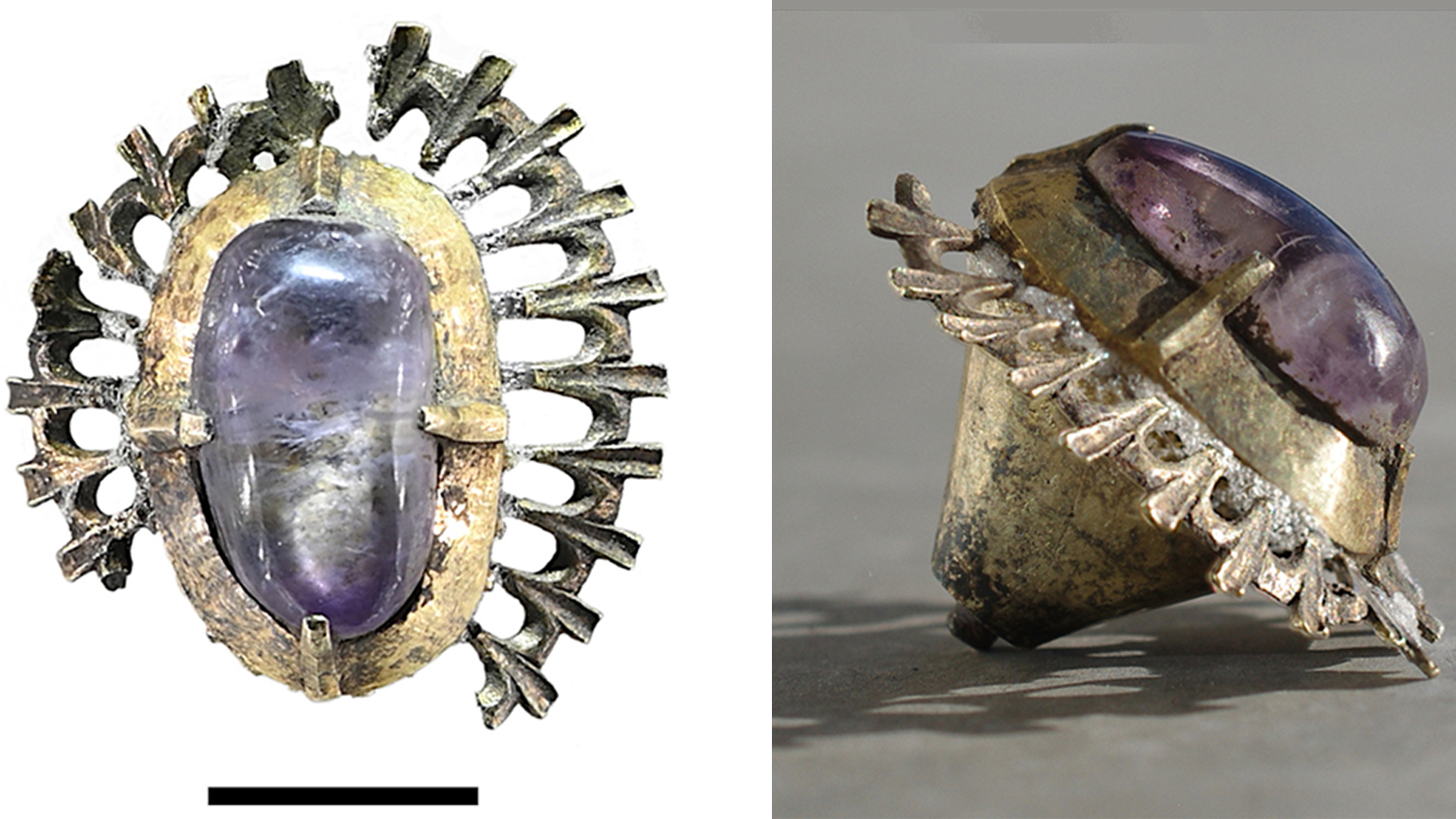Around 600 years ago, an aristocrat visiting a medieval castle lost an ornate piece of jewelry. But archaeologists recently dredged the unique amethyst set in fire-gilded silver from the muck of the old moat.
“I believe the item was originally part of a brooch or, less likely, a coronet or a crown,” Lech Marek, an archaeologist at the University of Wrocław in Poland, told Live Science in an email, “which makes it so unique in a medieval settlement context.”
Medieval jewelry is often found in hoards or in tombs, Marek and Beata Miazga, another archaeologist at the University of Wrocław, wrote in a study published online July 11 in the journal Antiquity. But this one was discovered in a more “everyday” situation, they wrote, having presumably been lost by someone traveling to or from Castle Kolno.
Castle Kolno was founded in the early 13th century as a fortress and duke’s palace that also served as a customs house controlling the transport of wood. The original owner, Duke Bolesław III of Brzeg, eventually sold the property to some wealthy knights. In 1443, Castle Kolno was burned and destroyed during the civil wars in Silesia. And in 2010, Marek and his team began archaeological excavation at the ruined castle, discovering military artifacts, cavalry items and ceramics typical of the 14th and 15th centuries.
Using Raman spectroscopic analysis, which measures the light emitted from lasers bombarding a substance to determine its molecular composition, the gemstone was identified as an amethyst, and X-ray fluorescence analysis revealed the metal parts were silver and fire-gilded, which involved considerable amounts of mercury, Marek and Miazga wrote in the study.
“Because of their symbolic meaning, availability and aesthetic qualities, amethysts were popular in the medieval period,” Marek said.
Related: Medieval crowns of Eastern European royalty hidden in cathedral wall since World War II finally recovered
Medieval folklore suggests that amethysts could protect their wearer from intoxication, venom, gout, bad dreams, treason, deceit, captivity, blindness, enchantment and strangulation, the researchers wrote, and they could also represent faith, modesty and martyrdom.
“In the sophisticated medieval play of symbols, the choice of gems for jewelry always had a deeper reason,” Marek said, and “if a jewel was believed to be charged with supernatural powers, its value increased rapidly.”
It is unknown who lost this semiprecious gem or how they lost it, but the researchers have no doubt the person lived an aristocratic lifestyle. Similar jewels in similar settings have been found on high-end jewelry of the period, Marek said. But the Castle Kolno amethyst is unusual because it is a high-status jewel worthy of a duke that was likely lost in a very mundane activity several centuries ago.
